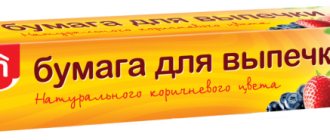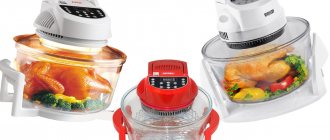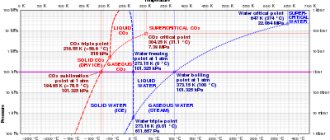Modern ovens delight with an abundance of useful functions and modes. However, understanding them is not so easy. Of course, it’s worth reading the instructions for a specific stove model, but sometimes even those instructions may not answer all your questions. In this review, we decided to find out what forced convection is in an oven and what its benefits are.
The most common designation of convection mode in an oven is the fan icon.
What is convection
Convection is the movement of heat by air currents inside the oven. During the process, cold and warm air masses are exchanged and mixed, as a result of which the temperature inside the furnace becomes the same and uniform throughout the entire volume of the enclosed space.
Depending on the mechanism of action, it is customary to distinguish between natural (free) convection, when air flows mix naturally. In this case it happens quite slowly. There is also forced convection, the principle of which is incorporated in modern ovens; this is a mode of forced circulation of warm air in the space, which is carried out thanks to special fans.
Why is convection needed?
It is difficult to overestimate the advantages of the convection mechanism in an electric oven or other device. This technology is provided in most modern household ovens. First of all, it is indispensable when baking large pieces of meat, pies, making pizza, grilled chicken or toast.
Convection promotes uniform cooking of the dish, with its help you can avoid burning in one part of the dish and inadequate baking in another. Previously, to do this, you had to constantly turn the sheet over and change the position of the dish on it. The technology allows you to cook large pieces of fish or whole meat. In addition, convection adds a number of advantages:
- rapid warming up of cold air, accordingly, saving time to obtain the desired temperature;
- the appearance of a crispy crust, the ability to dry out an overly juicy dish;
- possibility of simultaneous preparation of several dishes;
- in the presence of moist convection, food is partially steamed, retaining more beneficial properties and minerals.
How to tell if your oven has convection
If, when purchasing an oven, you did not inquire about the presence of such an important technology in it, then special signs on the control panel will help you understand this issue. On different models and on different convection type options, they may differ, but most often they are presented in the form of a fan icon, as well as indicators of its operating modes.
Principle of operation
The operating principle of convection is based on an active heat exchange process, which is achieved using a powerful fan located on the rear wall of the heating chamber. It accelerates the movement of air flows, thereby facilitating rapid heating of the oven volume.
Do you need convection in an electric oven?
Although modern models are mostly presented with a convection function, it is not difficult to find a model on the market without it. When purchasing, everyone must decide for themselves whether the convection function is needed or not.
There are some users who, even having bought an electric oven with this function, used it only a few times. If the equipment is purchased with a specific desire to please your family and loved ones every day with a variety of dishes and baked goods, then this function is of course desirable. When purchasing, additionally find out all the details of a specific model with convection from the seller, so that later you do not have to be disappointed in the product.
Selection principles
KD can be in both electric and gas models. There are also combined versions on sale. Their equipment includes a hob (gas) and an oven (electric). In some modifications, gas burners are combined with electric ones.
- Burners. Gas burners can have different shapes and power. Today there are a lot of models with round burners. There are triangular and oval versions. Some appliances have burners with 2-3 lines of flame.
- Cooking area. There are two options for its manufacture: enameled and stainless steel. The price of the first option is small. It has a wide range of colors. Solid hygienic properties are noted. For your information! The second option is more expensive. But it is much easier to clean. Recently, a third option has become relevant - an aluminum alloy that has undergone special processing. It has powerful performance characteristics. It requires minimal care. And such surfaces are resistant to scratches and tarnishing.
- Gas control. This option or its analogue is an excellent protector against gas leaks. Principle: The gas is automatically shut off if the flame goes out unexpectedly.
- Presence of electric ignition. Its versions: mechanical and automatic. To start the first option, turn the power relay and press the ignition button. The second version starts immediately after turning this relay.
- Presence of a timer. Its variations: mechanical and electronic. The first one only signals the end of the specified time. The second program programs the operation of the oven and one burner, automatically turns the oven on or off at a given time.
- Oven volume. The more food you plan to cook, the larger the oven. Very large ovens have a maximum range of options. Such versions are preferred by particularly hospitable hostesses.
- Oven cleaning method. Modern technologies greatly simplify stove maintenance. Cleaning the oven is easier thanks to the non-stick enamel. It is resistant to various stains. The hydrolysis or pyrolytic method of cleansing is simply a lifesaver for all housewives. The essence of the first: a baking sheet is placed in the oven, water with a cleaning agent is poured into it, the oven heats up, all the dirt in tandem with the steam ends up in the pan. The essence of the second: the oven is brought to high temperatures, for example, 250 degrees. Under such conditions, all the dirt burns. To achieve maximum cleanliness, you need to wait until the oven has completely cooled down and wipe it with a damp paper cloth. Some ovens have built-in filters to absorb grease and odors.
Free and forced convection
The movement of warm air masses itself, as noted above, is convection. But depending on what prompts them to circulate and mix, it is customary to distinguish between free (natural) and forced convection. Free convection occurs on its own in many processes, and occurs without external influence. Hot air becomes lighter, causing it to rise upward. Cold, being heavier – down. The efficiency and speed of such natural convection is much lower than that of forced or forced convection.
In the case of forced convection, air masses, under the influence of, for example, a special fan, circulate and mix much faster and more efficiently. As a result, hot air flows are fairly quickly distributed evenly in a confined space.
The emergence of the concept
The term “convection” was first proposed by the English scientist William Pruit back in 1834. It was used to describe the movement of thermal masses in heated, moving liquids.
The first theoretical studies of the phenomenon of convection started only in 1916. During the experiments, it was found that the transition from diffusion to convection in liquids heated from below occurs when certain critical temperature values are reached. Later this value was defined as the “Roel number”. It was named after the researcher who studied it. The experimental results made it possible to explain the movement of heat flows under the influence of Archimedes' forces.
Types of convectors
Since the appearance of the first ovens with convection function, various types and modifications of this technology have appeared. And today there are many types of them:
- A fan is the simplest type of convection. The bottom line is that when the fan blades operate, the air inside begins to actively move and mix, resulting in uniform baking of dishes.
- Fan with ring heater. This is already a more efficient system. In this case, the fan has an additional heating element, as a result of which warm air flows fill the space much faster.
- Reinforced convector. The meaning lies in the name itself. Essentially, this is the same fan, but much more powerful. With such a system, the air warms up much faster and more intensely. The food in the oven quickly becomes covered with a thin, pleasant crust on top.
- Moist convection. In this case, a steam generator is also built into the oven, due to which the air inside is actively saturated with steam. This is stewing, not frying. At the same time, the dishes turn out juicy, they retain more nutrients.
- Double convection. With this type of convection, which is also installed on some oven models, two fans are located opposite each other, each of which forces air masses to circulate at its own level. This type is most convenient when preparing several dishes at the same time.
Each of these convectors has its own advantages. For example, reinforced ones are best suited for roasting meat. Before purchasing a specific model, you should ask the seller what kind of convection system is installed in the selected model.
Are there any disadvantages?
Convection has quite a lot of advantages, but most housewives are interested in whether this option has any disadvantages. The function itself is almost perfect. It helps to prepare perfectly baked dishes that do not burn or dry out. The downside is the price. Modern electric convection stoves are quite expensive. There are models in the middle price range, but they are inferior to well-known brands. To fully enjoy all the advantages of convection, you will have to pay at least 40,000 rubles. Choosing an electric stove that has this function is recommended for those who often prepare baked dishes, as well as for large families, since it allows you to save electrical energy and time on cooking.
Devices with convection function
Gas convection oven
Gas stoves with built-in convection ovens are popular with many practical housewives. This is primarily due to the relatively low cost of fuel. Externally, such a stove is practically indistinguishable from an ordinary modern gas stove. However, a special fan is built into the back wall of such devices.
The convector in such a stove has a number of operating features. Since in these models the heating part is located at the bottom, before putting the dish in the oven for cooking, you must first turn on the convector for a short period, and then send the dish into the oven for cooking.
The disadvantages of this type include the lack of complete sealing of the oven, since it is necessary that combustion products have a constant outlet. This ultimately leads to longer cooking times.
Electric convection oven
Some housewives wonder how necessary convection is in the oven, because it itself is a fairly powerful fryer, capable of heating up to a temperature of several hundred degrees. In fact, even such a powerful flow of warm air is not capable of ensuring ideal uniformity of its distribution, and, accordingly, uniform cooking of the dish.
Today, voluntarily abandoning the convector in the oven is not a reasonable decision. It is thanks to him that it is possible to achieve ideal uniform baking of the dish, juiciness and crispy crust on the surface. It’s no wonder that models of electric stoves with convection are the most popular among buyers today.
Grill with convection
The grill function quite often comes as part of the options of modern stoves. The grill allows you to easily and efficiently cook meat on a spit. There are two types of grill:
- Gas. In this case, there is a high-quality imitation of cooking over coals.
- Electric. Its feature is more convenient operation.
Grill and convection combine perfectly and complement each other. There are two types of grills: air grill and turbo grill. The desired mode is very simply activated by pressing the corresponding button on the control panel. The advantage of using an air fryer is the ability to obtain high-quality roasted meat with a crust.
What is convection in a microwave oven
For a long time now, the microwave oven has become an integral part of the kitchen equipment set of most families. It allows you to quickly heat up various foods and semi-finished products, and defrost foods. Microwave ovens today also use convection quite often.
Moreover, in essence it does not differ from that in a standard oven, except for the size. The fan distributes air flow inside the chamber. When a certain temperature is reached, the system automatically turns off. The use of convection in microwave ovens can significantly reduce the time of defrosting and cooking food.
Popular brands
In a competitive environment, kitchen appliance manufacturers from different countries are trying to offer customers various models of convection ovens at an affordable price. Let's look at a few of the most popular brands that are represented in many Russian stores.
Hephaestus
GEFEST is a Belarusian manufacturer of household appliances. The model with convection GEFEST 6140-02 costs from 15 to 20 thousand rubles and has a large number of functions (there are lower and upper heating elements, grill and spit mode). True, the power of heating elements is small (up to 1.2 kW and 2 kW for a ring heater), which is why it will be more convenient to cook in such an oven in small portions.
Bosch
Stylish appliances from the Turkish company Bosh are varied - you can find both budget models and expensive ones with a large number of additional options. For example, the BOSCH HBF114EB0R oven belongs to the middle price category. It costs about 29 thousand rubles and has many functions: defrosting, thermal grill, multi-tier convection and safety shutdown (activated if the oven has been on for too long or has reached a critical temperature).
Hansa
Hansa is an advantageous combination of German quality and affordable prices for the Russian market. The Hansa BOEI62000015 model costs only 21 thousand rubles, but does an excellent job of preparing a variety of dishes. It has completely mechanical controls and a simple dry convection function, but in skillful hands this is quite enough to cook delicious meat, fish, vegetables or dessert.
Electrolux
Stoves from the Swedish company Electrolux look stylish and go well with any kitchen design. The convection model Electrolux EOB 53434 AX is in the middle price category, but at the same time it has a fairly large set of functions and additional components (baking sheets, grill). You can also control the baking process using the display, but it displays a limited amount of information.
Gorenje
From the Slovenian company Gorenje you can purchase a premium but compact oven that runs on electricity. The Gorenje BCS 547-ORA-B model is suitable for small kitchens (it can be placed anywhere). As befits an expensive model, it has a wide range of features: self-cleaning, touch screen controls, and a steamer function. At the same time, such a stove costs from 38 thousand rubles.
Itimat
The Turkish brand Itimat specializes in the production of electric mini ovens in accordance with European standards. This technique is suitable for small kitchens - it takes up very little space, but at the same time you can use all the functions of the oven. The multifunctional model MEGA OVEN K-60DFL has two heating elements, a convection fan, a timer for 6 different heating modes, and costs about 9 thousand rubles. True, today this brand is still quite young and not widely distributed in Russia - you rarely see it in large household appliance stores.
Ariston
The Italian company ARISTON mainly produces water heaters, but it also has a line of household appliances. Ovens are produced under the Hotpoint-Ariston brand and belong to the middle price category (from 21 to 50 thousand rubles). The convection model Hotpoint-Ariston 7OFI4 851 SH IX HA costs 28 thousand rubles, also has a grill function, six automatic cooking programs and a touch screen for controlling the process.
Gemlux
The Gemlux brand appeared on the market not so long ago - just six years ago. This is a domestic manufacturer offering household appliances at affordable prices. Since many Russians live in small apartments, one of the most current models of this brand remains the compact oven GEMLUX GL-OR-1838MN. Its oven capacity is 38 liters, but despite its size, the oven has functions such as spit, convection, grill and two heating elements with separate settings. This model costs about 7-8 thousand rubles.
Convection mode indicators
The main differences between wet convection, enhanced and dry
- Wet circulation. With this technology, in addition to the usual heating of the air, it is also actively saturated with moisture. This makes this convection ideal for steaming dishes.
- Increased circulation. The main detail in this case is a reinforced powerful fan. Perfect for those cases when you need to achieve a crispy crust on the surface of the dish.
- Forced dry circulation. In this case, the oven contains several fans, which also often have additional heaters.
The most useful programs
- Normal convection. Used for heating dishes, preparing dough before baking, drying herbs, berries and fruits.
- Convector, bottom heater and grill. This is the optimal mode for cooking semi-finished products.
- Convector and bottom heater. This mode is ideal for baking pizza, pies, and bread.
- Turbo grill. When this mode is turned on, the top heater, convector and grill are activated immediately. Good for cooking large pieces of meat.
All of these modes, except regular convection, should be used for a baking tray set at the same level.
Double convection
There are also models on the market with two convectors installed simultaneously. The main brand that produces such ovens is Samsung. The presence of two fans allows you to distribute and warm up the air masses much more efficiently.
Before purchasing equipment with this function, you should make sure that such a choice will be justified. The presence of this function significantly increases the cost of the equipment. The choice is appropriate if you plan to regularly prepare dishes in this mode.
Application of humid convection
Ovens in wet convection mode are used for steaming various meat, vegetables and other dishes. The design of ovens with a similar mode consists of the following elements: a fan, a special container for water and a generator that converts water into steam.
Experiment No. 1. Thermal conductivity
Using this experiment as an example, I wanted to demonstrate the effect of thermal conductivity clearly. Under normal conditions, heat should be transferred uniformly due to the oscillatory movements of particles.
I attached several buttons to a metal ruler using wax. Having secured the ruler in the tripod, I began to heat one end of the ruler using a spirit lamp. The ruler began to gradually heat up, this can be proven by the fact that the wax began to melt gradually and the buttons began to fall off one by one.
Conclusion from experience No. 1
The speed of oscillatory motion of metal particles increases in that part of the wire that is closer to the flame. Since particles constantly interact with each other, the speed of movement of neighboring particles increases. The temperature in the next part of the line begins to rise. With thermal conduction, there is no transfer of the substance itself. The thermal conductivity of metal is good, that of liquids is low, and that of gases is even lower.
Applications of Thermal Conduction
- Thermal conductivity is used in melting metals.
- In electronics, they use such a dense arrangement of circuit boards that it is difficult for the coolant to penetrate there. Therefore, heat has to be removed from electronic chips by thermal conductivity.
- Heating the bottom of the pan on the stove with gas. The burning gas heats the bottom of the pan, and heat is transferred through the bottom wall by conduction. In kitchenware, the handles of kettles and pots are usually made of wood or plastic due to the fact that wood and plastic have poor thermal conductivity.
- The surface of the iron, which is used for ironing, is metal so that it warms up well, and the rest of the iron is plastic so as not to get burned.
- The poor thermal conductivity of gases is mainly used as thermal insulation to protect rooms from freezing.
- Poor thermal conductivity of gases is used in windows. There is air between the two panes of glass in the window, so the air retains heat for a long time.
- A thermos works on the same principle as a window. There is air between the inner and outer walls, and the heat escapes very slowly.
- Thermal conductivity of gases is used in many building materials, such as bricks. There are holes in the brick for a reason, but to retain heat. The walls consist of two layers, between which there is air, this is done to retain heat.
- Houses in permafrost zones are built on stilts.
- A thin plastic film can protect plants from the cold, because polyethylene is a poor conductor of heat.
- Materials that do not allow heat to pass through are used during space flights to prevent pilots from freezing.
- It is better to handle hot objects with a dry cloth rather than a wet one, because air conducts heat worse than water.
Thermal conductivity in nature
In many non-migratory birds, the temperature of the legs and body can vary by up to 30 °C. This is due to the fact that they have to walk on cold ground or snow to avoid freezing; the low temperature of their paws greatly reduces heat transfer.
The formation of wind is also thermal conductivity. Winds usually originate near bodies of water. During the day, the land heats up faster than the water, that is, the air above the water is colder, therefore, its pressure is higher than that of the air above the land, and the wind begins to blow towards the land. At night, the land cools faster than above the water, and the air above it becomes colder than that above the water and the wind blows towards the water.
Animal fur has poor thermal conductivity, which protects them from overheating and freezing.
Snow, being a poor conductor of heat, protects winter crops from freezing.
The external body temperature of a person remains constant due to thermal conductivity and its property, according to which, when microparticles interact, they transfer heat to each other.
Interesting facts about thermal conductivity
Diamond has the highest thermal conductivity. Its thermal conductivity is almost 6 times greater than that of copper. If you put a diamond spoon into hot tea, you will immediately get burned because the heat has reached the end of the spoon.
The thermal conductivity of glass is so low that you can take a glass rod, hot in the middle, by the ends, and not even feel the heat.
Italian scientists have invented a shirt that allows you to maintain a constant body temperature. It will not be hot in summer, and cold in winter. This is due to the fact that it is made of a special material that does not allow heat to pass through.
How to use convection
All oven manufacturers describe in detail the process of using this function in a specific model. But as a rule, the algorithm is similar.
When to turn on convection in the oven
When using equipment with this function, no preheating is required, with the exception of models that run on gas or when heating frozen foods.
How to turn it on
Please note that when using a convector, food is cooked at lower temperatures than usual. When switching on, you need to make adjustments of approximately 25 °C.
How to turn off convection
If the mode is not needed, you can simply disable it. To do this, you need to turn the knob to a special indicator. It is different for each specific model and is described in detail in the instructions for use.
What do the icons on the oven mean?
The icons on the oven can be easily deciphered by looking at the technical data sheet of the device. Some of them are applied directly to the oven itself, some are only in the technical data sheet of the device.
If the oven is mechanically controlled, it has a degree scale and a timer.
If the oven has an electronic-mechanical control, the temperature and time scales are more accurate.
In an oven with touch control, LED icons are located on the LCD display
Designations for ovens
As a rule, the symbolic icons of different oven modes from different manufacturers are designated the same way.
How to make convection in an old oven with your own hands
Unfortunately, attempts to independently make a new oven with a convector out of an old oven will often not be successful, so the easiest way is to pay a little extra to buy such equipment in a professional store, which will also come with detailed instructions for use.
Today, convection in household ovens is becoming a common element. This is understandable - after all, thanks to this function, it has become possible to create truly exquisite culinary masterpieces and delight your loved ones with them.
Results
When you are going to purchase this or that model, say Hans, check out the assortments and reputation of stores from your or the nearest city. Study reviews of both the store and the model. If there are few critical reviews of a model, it may be that people simply did not purchase the best product or were using it incorrectly. Here is a question for the retail outlet. Give preference to both the store and the product with the most positive reviews. Of course, visit several stores and check the stove in person.
Experiment No. 2. Radiation
In this experiment I wanted to show a way to transfer heat without the interaction of two bodies. The heat must be transferred to the receiver, which in turn releases it through the tube into the liquid pressure gauge. Due to the heating of the air in the elbow connected to the liquid pressure gauge, the liquid should drop.
I connected the fluid pressure gauge elbow to the heat sink. He lit the alcohol lamp and brought the heat sink to it with the light side, but at a certain distance. The fluid in the pressure gauge elbow connected to the receiver has decreased slightly. Having equalized the amount of liquid in the pressure gauge, I again brought the heat receiver to the heat source, but with the dark side. The fluid in the pressure gauge elbow connected to the receiver has decreased, but much more and faster. The air in the heat sink heated up and expanded, beginning to put pressure on the liquid in the pressure gauge elbow.
Conclusion from experience No. 2
Energy was not transferred by thermal conductivity. Between the heated body and the heat sink there was air - a poor conductor of heat. Therefore, in this case, energy transfer occurs by radiation.
Heat transfer by radiation differs from other types of heat transfer. It can be carried out even in a complete vacuum.
An important and distinctive property of thermal radiation is the equilibrium nature of the radiation. This means that if you place a body in a thermally insulated vessel, the amount of energy absorbed will always be equal to the amount of energy emitted. Some of the heat received by radiation is absorbed, and some is reflected.
Applications of radiation
The ability of bodies to absorb radiation energy differently is used in practice. Thus, the surface of balloons and airplane wings are painted with silver paint so that they are not heated by the sun.
Radiation heating of the room with special infrared radiators. This heating is more efficient than convection heating, since the rays pass freely through the air.
Radiation is used on spacecraft. Since there is no air there, there is no other way to transfer heat.
If you are close to an incandescent lamp, you can feel the heat emanating from it.
Solar panels work on the principle of radiation. The sun emits powerful heat rays. Solar panels receive heat rays and convert them into energy. Such batteries are good receivers for sunlight because their surface is dark in color and they heat up well. Such batteries are used on space stations and satellites.
Heat rays also come from computers and mobile phones.
Night-vision devices. Such devices are made of materials capable of converting thermal radiation into visible radiation. Such devices are used for shooting in complete darkness. They are able to capture different areas whose temperature differs by hundredths of a degree.
Interesting Facts
The darker the body, the better it absorbs heat. Mirror surfaces reflect heat received by radiation. An absolutely black body is a physical body that, at any temperature, absorbs all electromagnetic radiation incident on it in all ranges.
When an object reaches a high temperature, it begins to glow red. As the object is further heated, the color of its radiation changes, passing through orange, yellow, and further along the spectrum, the hotter it is, the shorter the wavelength of the radiation.
When radiation, spreading from a source body, reaches other bodies, part of it is reflected, and part is absorbed by them. When absorbed, the energy of thermal radiation is converted into the internal energy of bodies, and they heat up.
Snakes perfectly perceive thermal radiation, but not with their eyes, but with their skin. Therefore, even in complete darkness they are able to detect warm-blooded prey. Rattlesnakes and Siberian copperheads respond to temperature changes of up to a thousandth of a degree.
80 percent of body heat is radiated by the human head.
If not for the properties of radiation, the earth would have frozen. Since the earth constantly emits heat rays into infinite space.
The eyes of a cockroach sense temperature fluctuations of a hundredth of a degree. Every square meter of the earth's surface receives about 1 kW of solar thermal energy, which is enough to boil a kettle in a matter of minutes.











